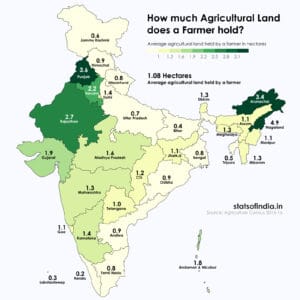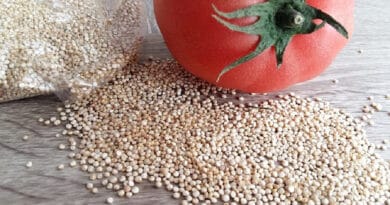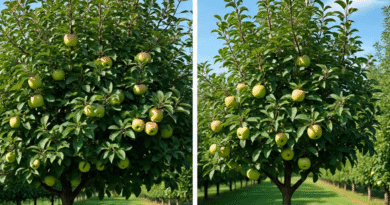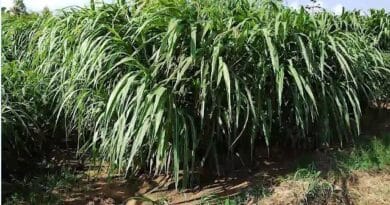Why is the Cow So Important for Indian Agriculture?
Why is there no better alternative than using cattle in farming?
Cows are essential to agricultural operations, sustaining farming systems and rural economies across the globe. In addition to supporting farm labor, soil fertility, and the overall sustainability of agricultural activities, they are important for the production of cow milk and meat. The significance of cows in agriculture and how their presence benefits both conventional and contemporary farming systems will be discussed in this article.
The cow has been treated as a sign of grace and devotion. The cow is dealt with because it is the most elevated and most devout creature and is given the most extreme significance, being at the summit within the animal world. In antiquated India, sēvā (administration) was obligatory alongside Guru-sēvā (Service unto the Guru).
“Cows carry prosperity and immaculateness to our home. She is a wellspring of wealth and prosperity.” Arthveda 4-21-5
Why is the cow So Important for Indian Agriculture?
1) Importance of cows for Marginal Size of Agricultural Land :
As per the agricultural census, 2021–2022, the average size of operational agricultural landholding in India is 0.74 ha, a decrease from 1.08 hectares in 2016–2017, according to the All India Rural Financial Inclusion Survey (NAFIS) report.
Small (below 1 Ha) and marginal landholdings (Below 2 ha) constitute 86.2% of total landholding; that’s why there is no better alternative than using cattle in farming
2) Cattle Ploughing vs Tractor Ploughing:
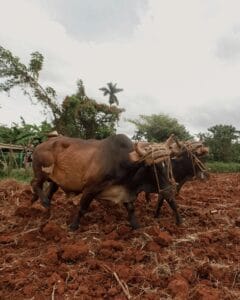
Tractors used for plowing over the soil make the upper surface hard due to their downright weight, which results in poor water penetration. On the other hand, in cattle plowing, the footprints left by the animal itself will act as a ‘micro catchment area’, conserving rainwater besides helping to plow as well as de-weed more easily in fields where small-sized crops are grown. Though cattle plowing is slower in speed and labor-intensive, despite this, cattle plowing is environmentally friendly and cost-effective in comparison to tractor plowing
3) Cattle Manure;
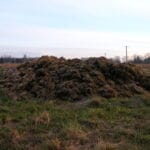
Cow manure contains digestive grasses and grains, so it is high in organic matter and packed with quality major and minor nutrients required for plant growth.
Roughly, the NPK value of decomposed cow dung is NPK-3:2:1
4) Cow urine is an eco-friendly insecticide.

Cow urine or well-fermented buttermilk are used in making several organic pesticides that help kill several harmful insects without affecting the beneficial insect population (99% of the insects in nature are beneficial)
5) Cow dung capacity:
One cow’s dung may fertilize 5 acres of land, and its urine can protect 10 acres of land; it saves five times as much water in comparison to chemical fertilizers; it also increases the quality and yields of the plants.
Role of the Cow and Bulls in the Indian Economy
Natural resource:
Cattle are India’s greatest natural resource. They eat only grass, which grows everywhere and generates more power than all of India’s generating plants. They also produce fuel, fertilizer, and nutrition in abundance.
Power resource:
India runs on bullock power. Some 15 million bullock carts move approximately 15 billion tons of goods across the nation. Newer studies in energetics have shown that bullocks do two-thirds of the work on the average farm.
Electricity and fossil fuels account for only 10%. Bullocks not only pull heavy loads but also grind the sugarcane and turn the linseed oil presses. Converting from bullocks to machinery would cost an estimated $30 billion-plus maintenance and replacement costs.
Energy contribution;
The biggest energy contribution from cows and bulls is their dung. India’s cattle produce 800 million tons of manure every year. The Vedas explain that dung from cows is different from all other forms of excrement. Indian culture insists that if one comes in contact with the stool of any other animal, they must immediately take a bath. Even after passing stool oneself, bathing is necessary. But the cow’s dung, far from being contaminating, instead possesses antiseptic qualities. This has been verified by modern science. Not only is it free from bacteria, but it also effectively kills them. Believe it or not, it is just as effective as Lysol or Mr. Clean as an antiseptic.
- Most of the dung is used for fertilizer at no cost to the farmer or to the world’s fossil fuel reserves. The remainder is used for fuel. It is odorless and burns without scorching, giving a slow, even heat. A housewife can count on leaving her pots unattended all day or returning any time to a preheated griddle for short-order cooking. To replace dung with coal would cost India $1.5 billion per year.
The effect of cows on the food
Today, milk and milk products are the most essential part of the food, not only in India, but also in the whole world, due to the nutrients in them. A mother nursing her infant depends on cow’s milk for her nourishment. A mother feeds her child for a year or two; then the cow is a lifelong refuge for us all. The cow feeds its own calf and spares plenty for us, too.
Different popular beverages like coffee, tea, etc. require milk as an important ingredient. Scores of sweet dishes in India are milk-based. Curd, butter, and ghee are an essential part of an Indian meal. The taste of items deep-fried in ghee is unmatched. Buttermilk quenches thirst in addition to being a base for many popular dishes in our cooking.
Importance and medical use of Cow urine
Cow urine, which has a unique place in Ayurveda, the ancient Indian system of medicine. Commenting on the chemistry of gau mutra, Cow urine is used to produce a whole range of ayurvedic drugs, especially to treat skin diseases like eczema. Besides, gau mutra is a well-known disinfectant. Anti-septic property is also the attribute of cow dung or gobar, which is mixed with clay to form a plastering medium for mud huts. It is a proven fact that mud huts plastered with gobar keep insects and reptiles away. This is the reason why people in the countryside still store grain in huge earthen pots plastered with gobar and gau mutra to keep it free from insect manifestations.
In the Mahabharat era Nakul was known as the famous cow urine therapist. Indians believe that cow urine enhances holiness and purity when spread in the courtyard and home. There is a need to refocus, in a creative enterprise, on cow as a source of health, wealth, and happiness. Cow urine has wonderful properties. It is used in the purification of many strong poisons, sub poisons, metals, and sub metals, ras, maharas, and astrologist stones. Poisonous materials become poisonless within 3 to 7 days if purified with it according to the Indian method.
Importance of cow dung
Ancient scriptures state that the “Suryaketu” nerve on the cow’s back absorbs harmful radiations and cleanses the atmosphere. The mere presence of cows is a great contribution to the environment. India has approximately 30 crore cattle. Using their dung to produce bio gas, we can save 6.0 crore tons of firewood every year. This would arrest deforestation to that extent. African deserts were made fertile using cow dung. We can reduce the acid content in water by treating it with cow dung. Hence, we can say that cow dung has an important role in preserving the environment.
When we burn cow dung, it balances atmospheric temperature and kills germs in the air. Cow dung has antiseptic, anti-radiative and anti-thermal properties. When we coat the walls and clean the floors of the house with cow dung, it protects the dwellers. In 1984, a gas leak in Bhopal killed more than 20,000 people. Those living in houses with cow dung-coated walls were not affected. Atomic power centres in India and Russia, even today, use cow dung to shield radiation.
Cow dung fertiliser is important in helping to improve the structure of the soil(aggregation). Animal manure has been used for centuries as a fertiliser in farming, improving the soil structure so that it holds more nutrients and water and becomes more fertile. Animal manure also encourages soil microbial activity which promotes the soil’s trace mineral supply, improving plant nutrition. It also contains some nitrogen and other nutrients itself which assisst the growth of plants.
“Cows provide approx 100 million tonnes of dry dung a year costing Rs 5000 crores which saves 50 million tonnes of firewood which again means that many trees saved and more environmental damage prevented. It is calculated that if these 73 million animals were to be replaced, we would need 7.3 million tractors at the cost of 2.5 lac each, which would amount to an investment of 180,000 crores. In addition, 2 crore, 37 lakh and 50 thousand tonnes of diesel, which would mean another 57,000 crore rupees. This is how much we owe these animals, and this is what we stand to lose by killing them.” – Maneka Gandhi
Effect of Cow Dung on the Environment
Cow Dung is used in Agnihotra
1. As the paipal tree and holy basil plant give oxygen, similarly, the Cow is the only animals that emit a major amount of oxygen. If one spoon of pure ghee is poured on the burning cow cake dung (fuel), then they can produce one ton oxygen; therefore, ghee made with cow milk is used in sacrificial fires and havans. There is no better method to remove pollution.
2. India has approximately 30 crore cattle. Using their dung to produce biogas, we can save 6.0 crore tons of firewood every year. This would arrest deforestation to that extent.
Cow dung-based business Ideas ;
- Bio fertilizer business
- Cow Dung-Based Uppale Business
- Cow dung Based Biogas business
- Bio CNG gas business
- Garden Pots Business
- Wood made from Cow dung business
- Mosquito repellent coils
- Soap and other cosmetic Business
- Wooden big bricks
- Cow dung paper
In our country, the cow possessed a very important status since the Vedic period. The cow possesses a very important place in Ayurveda. Cow dung is used in the preparation of several products

